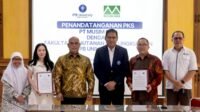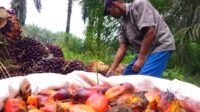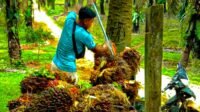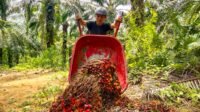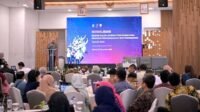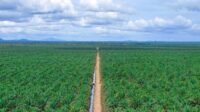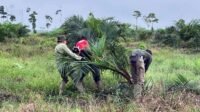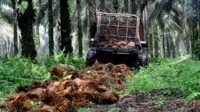PALMOILMAGAZINE, JAKARTA — Indonesian Minister of Defense Sjafrie Sjamsoeddin witnessed a historic milestone in the nation’s forest governance reform through the official handover of the second phase of forest land reclamation, covering 1 million hectares. The reclaimed areas include Tesso Nilo National Park and illegally occupied oil palm plantations recovered by the Forest Area Structuring Task Force (Satgas PKH), at a ceremony held in Jakarta on Wednesday, July 9, 2025.
The event began with the symbolic relay of documents recording the official reclamation. Starting from the Attorney General, then handed to the Deputy Minister of State-Owned Enterprises, the documents were ultimately received by the President Director of PT Agrinas Palma Nusantara (APN)—signifying a major step toward the productive and legal use of state assets.
In his speech, Minister Sjafrie, who also serves as Chief Advisor of Satgas PKH, emphasized the task force’s role as a strategic breakthrough to restore the function of illegally occupied forest areas and rebuild the foundation of a land-based sustainable economy.
Also Read:
“This achievement is a clear testament to the state’s commitment to safeguarding our forests as vital national assets,” Sjafrie stated in an official release to Palmoilmagazine.com on Saturday, July 12, 2025.
Satgas PKH was established under Presidential Regulation No. 5 of 2025, with the mandate to reclaim 3 million hectares of forest land by August 2025. The targeted areas include illegal oil palm plantations, industrial forest plantations (HTI), conservation zones, and plasma plantations yet to be distributed to local communities.
As of July 2025, over 2 million hectares have already been reclaimed, positioning Satgas PKH as one of the most progressive instruments of policy reform in restoring Indonesia’s forest spatial planning.
A key focus of this second phase is the Tesso Nilo National Park in Riau, a region that has for nearly two decades symbolized weak conservation enforcement. Its successful recovery is seen as a milestone in biodiversity protection and ecosystem balance.
Beyond its environmental impact, the forest reclamation also brings significant economic benefits. Between February and June 2025, the state collected Rp615 billion in tax revenues from parties previously occupying forest areas illegally—comprising Rp167 billion in land and building taxes (PBB) and Rp448 billion from other tax obligations.
“These figures reflect growing compliance and awareness among stakeholders, and demonstrate that this policy directly contributes to national revenue,” said Sjafrie.
He also explained that future land management will be selective and strategic. Productive reclaimed areas with high economic value will be managed by PT Agrinas Palma Nusantara, under the coordination of the Ministry of Finance and Ministry of SOEs. This aims to maximize the utility of state assets for broader public welfare.
“This transformation is not just about enforcement—it’s about building a just, sovereign, and sustainable economic system,” he added.
Concluding his remarks, the Defense Minister expressed his gratitude to all members of Satgas PKH—from prosecutors and law enforcement, to technical ministries and local governments—who have worked in unison to advance this national agenda.
“I hope this spirit of service continues so that the restructuring of our forest areas brings real benefits to the people and ensures the future of Indonesia’s environment,” he concluded. (P2)








